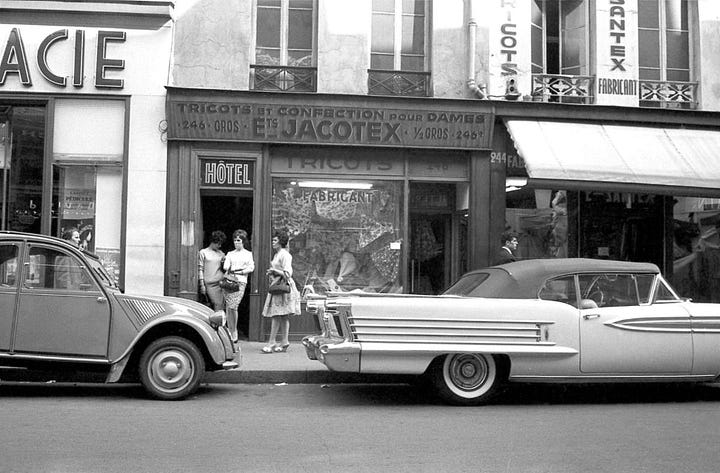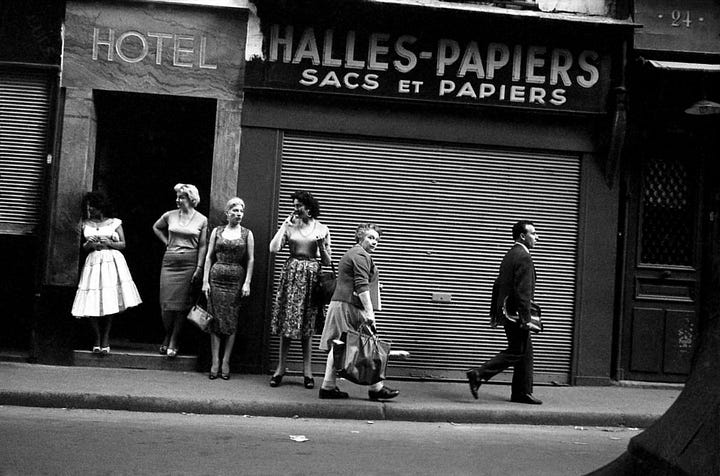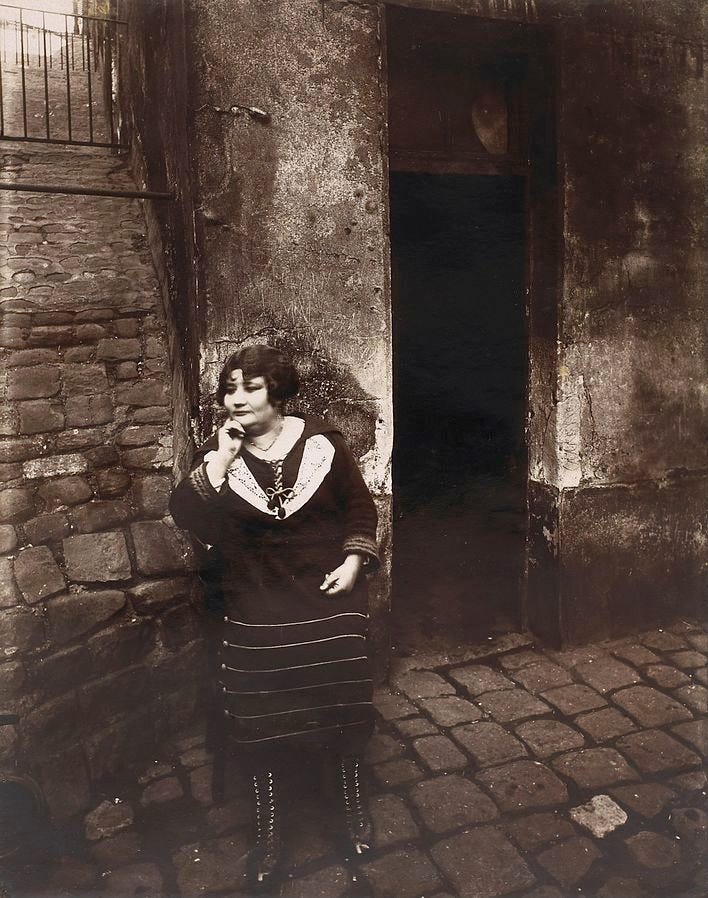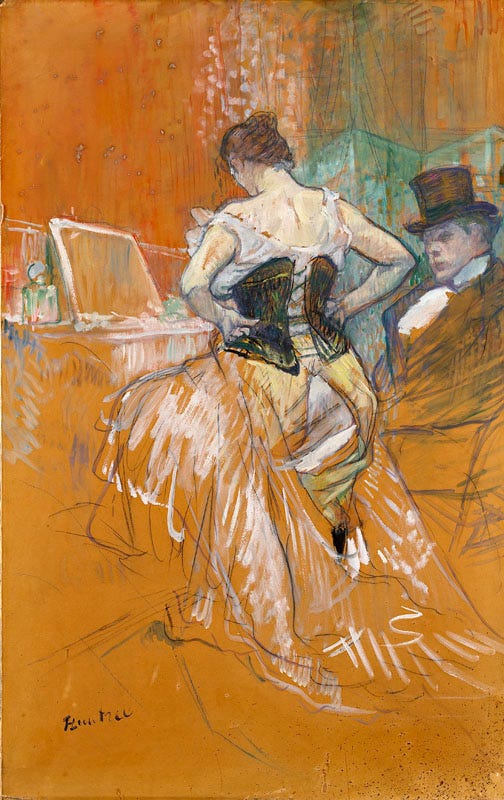The seedier side of Paris
The 'world's oldest profession' got a boost in the French capital
Earlier this year, I was sitting in a coworking cafe with a group of writers who I’ve come to know over the last year and a half. Every weekend for several hours, these folks meet to write and discuss whatever project they’re working on. This has ended up being a very important part of my life as a journalist-turned-writer in Paris.
During one session, when we were taking a break and chatting with each other, I told some of the other writers about this very website. One of them offered an idea:
“You could write about the prostitutes on Rue Saint-Denis!”
Oh?
So here we are, that’s what I’m writing about this week, kind of.
First, let’s travel back to the more recent history of prostitution in Paris.
During the 19th century, prostitution was not uncommon on the streets of the French capital. In fact, it was legal, so it didn’t need to be done clandestinely. Sex workers were required to register with the police and receive regular health checks.
There were dozens of legal brothels known as maisons closes — not just in Paris, but across the major French cities.
Moral brigades
Around the mid-18th century, ‘moral brigades’ were created as part of the Prefecture of Police to start combatting the moral decline in Paris. The ‘moral brigades’ weren’t there to shut down prostitution, but to make sure they were operating above board. But also, they would use the street walkers to obtain information about religiously moral people who were engaging in nefarious acts. But these moral watchmen weren’t exactly ‘nice guys’. They were notorious for roughing up prostitutes, so it was best to avoid them if possible.
Prostitution: a hierarchy
The latter part of the 19th Century turned into the period known as the Belle Epoque. By this period, there was a hierarchical structure to the world of prostitution.
At the top were the ‘kept women’ or demi-mondaines. The police apparently kept very close tabs on them and their better-known clients. Many of these women were very wise with their money and even ended up marrying well.
At the bottom of the chain were the pierreuses who worked illegally, and at night, further outside the city center. Then there were the filles insoumises who were unregistered and would solicit clients on the streets (rather than at an approved brothel).
Somewhere in the middle were your average women who needed to supplement their income in order to make ends meet. It is said that sometimes it was difficult to distinguish between one of these prostitutes and someone who wasn’t working the streets. Of course, the signal would be an exposed ankle or an inquiring smile.
An artist’s inspiration
The Belle Epoque was a time when artists took inspiration from what they observed in society. With prostitution being as common as it was in the late 1800’s, some very well-known artists were inspired by Paris’ sex workers. One of the more well-known was Henri de Toulouse-Lautrec, the pint-sized painter who actually lived in brothels!
In fact, Toulouse-Lautrec created a series of paintings called Elles based on his studies of the women he observed in brothels. He also is known for painting the dancers at the raucous Parisian dance halls. His work inspired other painters like Picasso and Manet, for example.
Let’s get back to Rue Saint-Denis.
It’s located on the Right Bank and is one of the oldest streets in Paris, dating back to the Middle Ages. The street’s name represents the city’s strong Catholic history; it was named after Saint Denis, the first Bishop of Paris.
To be honest with you, there isn’t a lot of information about the history of prostitution on Rue Saint-Denis, though various writings refer to it as being ‘well known’ for the trade.
However, in searching for information, I did find that a photographer named Maurice Zalewsky took photos clandestinely on Rue Saint-Denis in the 1960s. To me, these women look like they fit the category of relying on the trade to make ends meet financially. (I could be wrong.)




Prostitution became illegal in France in 2016 and today, rue Saint-Denis has a lot of sex shops and a seedy feel to it. I didn’t even realize its reputation when I was over there a few years ago: I had met my friend Sara for dinner nearby and we walked back on Rue Saint-Denis on our way to the metro. “This place used to be famous for prostitution,” she told me.
Sources:
Prostitution in Paris: Musee d'Orsay
The Collector: 19th Century brothels in French Impressionism paintings









Sex shops with porn arcades behind the curtain are generally the same across the world. Even by those standards the ones on St Denis are rough. I’m working on a long form piece about these types of places and nothing in Europe has the dangerous feeling of those shops.
Also, we saw the exhibition Splendour and Misery: Images of Prostitution 1850–1910 at the Orsay around the same time.